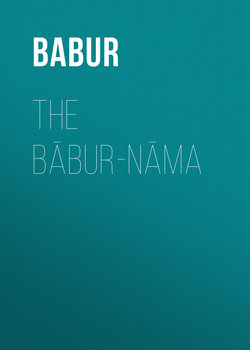Читать книгу The Bābur-nāma - Babur - Страница 6
PREFACE
Chapter III.
THE TURKI MSS. AND WORK CONNECTING WITH THEM
Part I. The MSS. themselves
ОглавлениеPreliminary.– Much of the information given below was published in the Journal of the Royal Asiatic Society from 1900 onwards, as it came into my possession during a search for reliable Turki text of the Babur-nama. My notes were progressive; some MSS. were in distant places, some not traceable, but in the end I was able to examine in England all of whose continued existence I had become aware. It was inevitable that some of my earlier statements should be superseded later; my Notes (see s.n. JRAS.) need clearing of transitory matter and summarizing, in particular those on the Elphinstone Codex and Klaproth’s articles. Neither they nor what is placed here makes claim to be complete. Other workers will supplement them when the World has renewed opportunity to stroll in the bye-paths of literature.
Few copies of the Babur-nama seem to have been made; of the few I have traced as existing, not one contains the complete autobiography, and one alone has the maximum of dwindled text shewn in the Persian translation (1589). Two books have been reputed to contain Babur’s authentic text, one preserved in Hindustan by his descendants, the other issuing from Bukhara. They differ in total contents, arrangement and textual worth; moreover the Bukhara book compiles items of divers diction and origin and date, manifestly not from one pen.
The Hindustan book is a record – now mutilated – of the Acts of Babur alone; the Bukhara book as exhibited in its fullest accessible example, Kehr’s Codex, is in two parts, each having its preface, the first reciting Babur’s Acts, the second Humayun’s.
The Bukhara book is a compilation of oddments, mostly translated from compositions written after Babur’s death. Textual and circumstantial grounds warrant the opinion that it is a distinct work mistakenly believed to be Babur’s own; to these grounds was added in 1903 the authoritative verdict of collation with the Haidarabad Codex, and in 1921 of the colophon of its original MS. in which its author gives his name, with the title and date of his compilation (JRAS. 1900, p. 474). What it is and what are its contents and history are told in Part III of this chapter.
